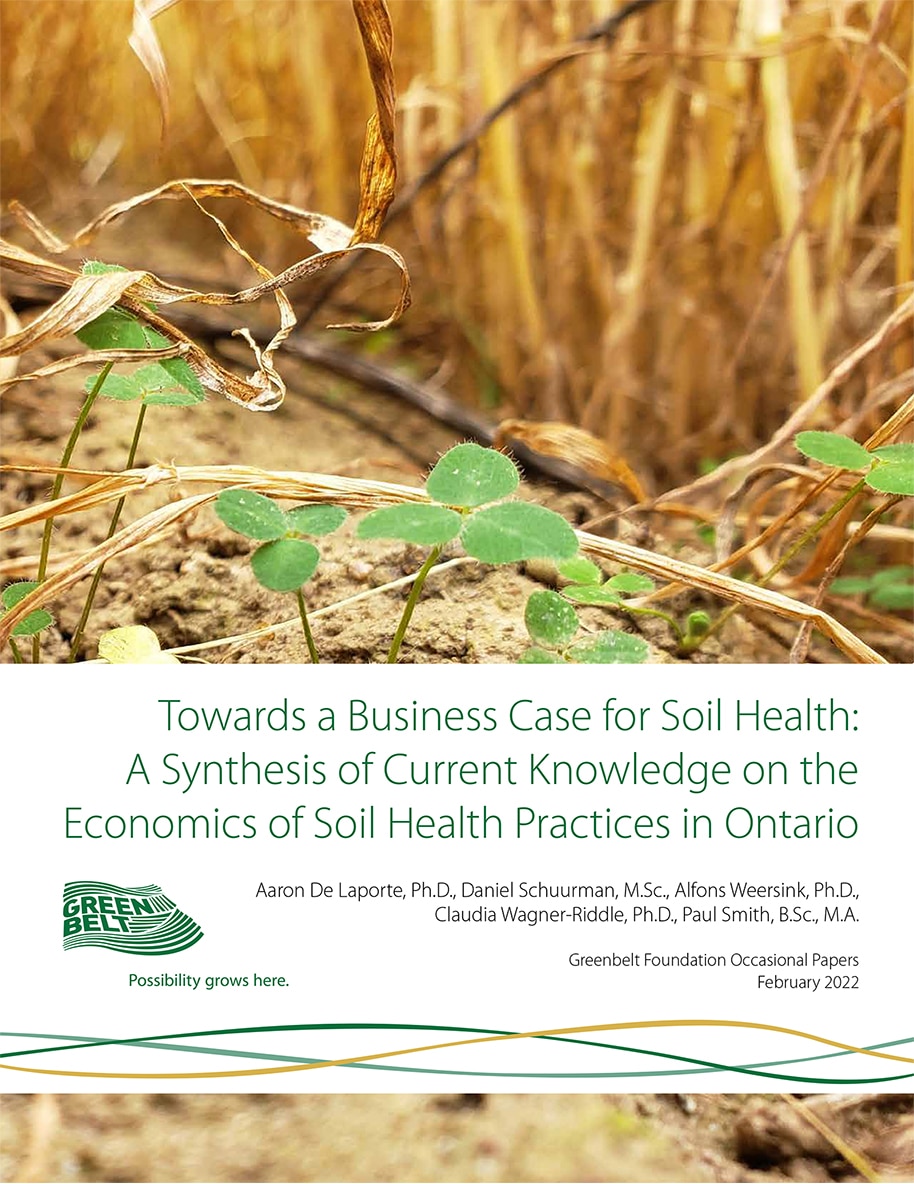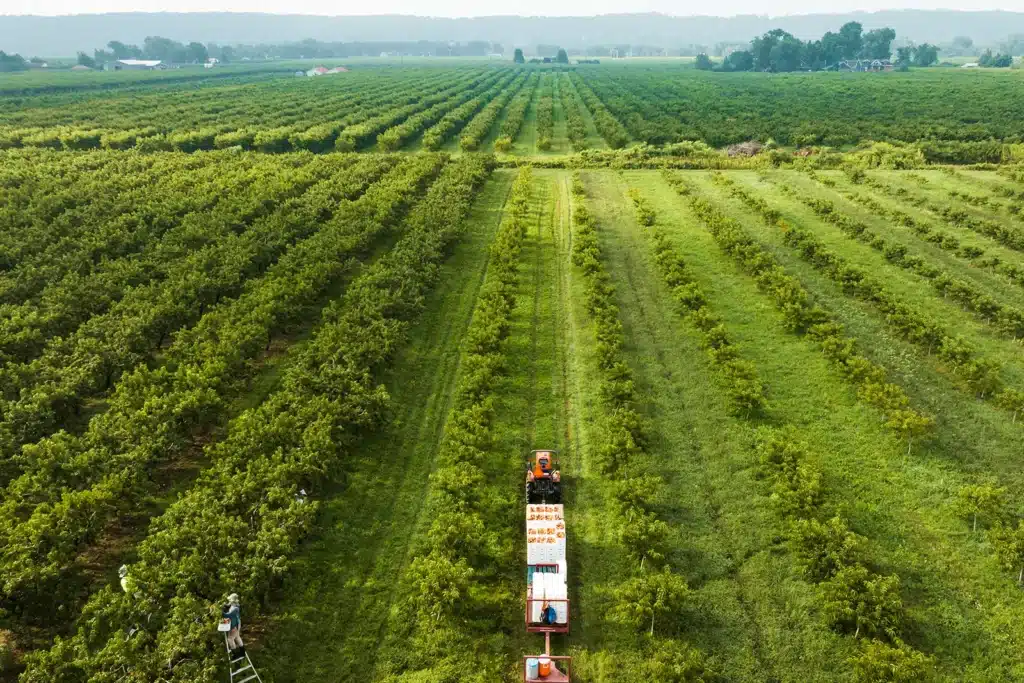Towards a Business Case for Soil Health: A Synthesis of Current Knowledge on the Economics of Soil Health Practices in Ontario mobilizes current knowledge to help build the business case for soil health on farms in southern Ontario to aid decision making by farmers and their advisors. It is the first comprehensive presentation of the state of soil health economic information for southern Ontario.
This new research from the Greenbelt Foundation, in collaboration with researchers from the University of Guelph, addresses one of the main recommendations from The Power of Soil: An Agenda for Change to Benefit Farmers and Climate Resilience report to “make the business case for soil health.” That initial report was released by the Greenbelt Foundation and Équiterre in 2021.
The study also identifies several research gaps and provides recommendations for future action regarding soil health practices in Ontario.
The analysis uses current knowledge on quantified costs and benefits while recognizing that many benefits remain unquantified. The analysis is an important foundation to build on and the estimates are likely conservative in nature and will evolve with new knowledge. This work starts a crucial conversation and stimulates further research documenting costs and benefits.
The report determines a range in net returns from the adoption of six different soil health practices:
- Tillage intensity
- Cover crops
- Diverse crop rotations
- Nutrient management
- Organic amendments
- Rotational grazing
Using data from literature synthesis and financially representative farm-level budgeting techniques for southern Ontario, the study found that most of these practices have a range of net returns, from negative to positive, implying that they may be financially beneficial to many farmers under certain conditions, but not to others with less favourable conditions.
Summary of Findings
Tillage Intensity
For a typical grain farm with a corn-soybean crop rotation, tillage reduction appears to present less variability than other practices, with a small range in net returns and small gains or losses. Initial costs from corn and soybean yield losses ease over about five years, eventually returning to similar yields as conventional tillage. Costs savings occur in all years, resulting in more favourable net returns for both crops after five years. Over the corn-soybean rotation the net return is better for no-tillage after year five, with gains in the soybean year compensating for losses in the corn year.
Cover Crops
Cover cropping of mixed varieties has higher initial costs that move towards sustained positive values over five years due to increases in crop yields. Revenue benefits increase over time through five years as yields build, while costs, N credit, and weed control benefits remain constant. Cover crop mixes including legumes tend to have higher returns than a single non-legume cover crop like cereal rye. When the price of crops (50 per cent higher) and the costs of N are high (doubled), cover cropping has positive net returns immediately. It is important to control the costs of cover cropping by choosing appropriate seed mixes and seeding rates.
Diverse Crop Rotations
Adding winter wheat to a corn-soybean crop rotation also has initial costs, but like tillage and cover crops, the benefits become positive over time, as soon as the second year, with maximum sustained benefits by the fourth year. This stems from yield benefits increasing over time as the land in rotation grows winter wheat piece by piece, increasing revenue and costs.
Nutrient Management
Of the 4R nutrient management practices examined, rate reduction has the smallest range in net returns, followed by split N application. Inhibitors and precision application have the largest ranges, with relatively high upside for inhibitors and relatively low downside for precision application. When crop prices are high, changes in yield and revenue are more pronounced. When N costs are high, 4R practices that save on these costs have a greater effect on net returns.
Organic Amendments
Chicken manure use has a high potential upside, but beef manure barely breaks even with mineral fertilizers. However, this is only true if the price of manure is zero and transportation distances are short. When the price of N is high, manure represents greater cost savings and reasonable transportation distances increase. Manure also has a host of other unmonetized benefits, including application of carbon, additional micronutrients, and soil microbes.
Rotational Grazing
Rotational grazing can have relatively small costs and benefits, depending upon the intensity of grazing, with greater intensity having potentially greater net returns, but much higher upfront capital fencing and water costs. Cow-calf operations in Ontario appear to have negative net returns, overall, but management intensive grazing can relatively increase net returns.
The study also identifies several research gaps and provides recommendations for future action regarding soil health practices in Ontario.
Soil Health Fact Sheets
In collaboration with Soils at Guelph, each practice analyzed has been distilled into a factsheet, detailing their respective costs and benefits, as well as pro tips from Ontario farmers who have adopted these methods.




